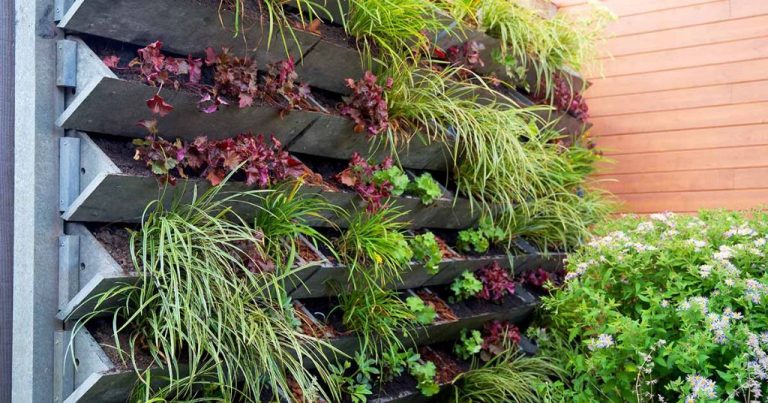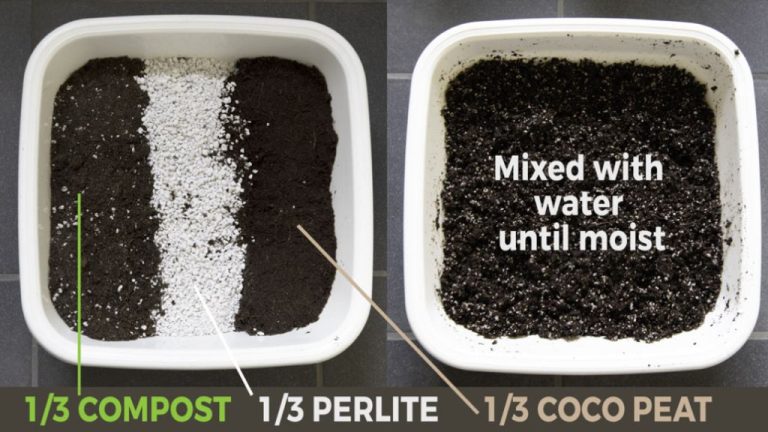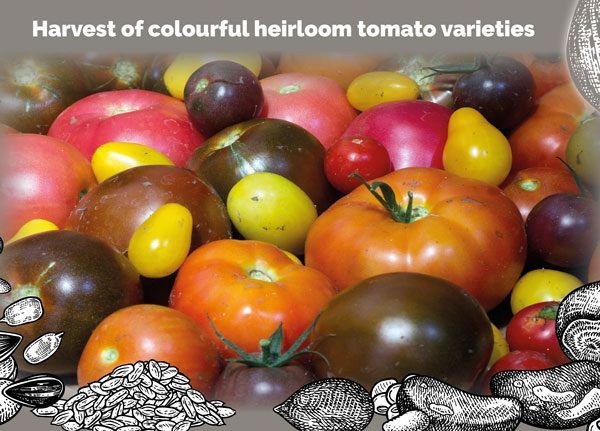Urban Pollinator Gardens: Attracting Bees And Butterflies To City Areas
Urban pollinator gardens are designated areas in city landscapes that contain native plants selected specifically to attract and support pollinators like bees, butterflies, hummingbirds, and other beneficial insects (https://extension.illinois.edu/blogs/garden-scoop/2022-01-28-new-research-assesses-value-urban-pollinator-gardens). Pollinators play a crucial role in plant reproduction and food production, so providing habitat for them is important even in urban settings. Pollinator gardens offer many benefits, including increasing biodiversity in cities, boosting pollination of neighborhood trees and plants, providing food and shelter for pollinators, and beautifying urban spaces (The Importance of Pollinators – USDA). By filling unused areas with native flowering plants, city dwellers can support the health of bees, butterflies, and other pollinating species that are under threat.
Choosing a Location
When selecting a location for your urban pollinator garden, it’s important to choose a sunny spot, away from pesticides. According to the Urban Pollinators Poster from Pollinator Partnership, pollinators need warmth from the sun to stay active, so aim for 6 or more hours of direct sunlight if possible (https://www.pollinator.org/poster-urban). Avoid areas that are routinely sprayed with pesticides or insecticides.
Also consider the views and accessibility of your location. Choosing a highly visible spot near paths or seating areas will allow more people to enjoy the garden. Make sure it is accessible for tending and maintaining. Positioning it near a water source will make watering and upkeep easier.
Try to select a fairly sheltered location, protected from strong winds. This will help create a calm environment for pollinators to feed and thrive.
Planning Your Garden
One of the first steps in creating an urban pollinator garden is planning out the shape, size, and features you want to include. When deciding on the overall layout, group flowering plants thoughtfully based on bloom time and height. The University of Michigan recommends selecting a sunny location at least 6 feet by 8 feet in size that is protected from heavy winds for your pollinator garden (Tips for Planting a Pollinator Garden).

Map out the shape and boundaries of your garden space, taking into account existing trees, pathways, and other landscaping. Aim for a rectangular or circular shape at minimum 4 feet wide. Mark the perimeter with string, rocks, or mulch. Next, sketch the layout and make a list of desired elements like paths, seating areas, arbors, boulders, fountains, etc. Decide how you will group plants according to height, bloom sequence, color, and sunlight and water needs. Taller plants often work well in the back or center, with short flowers around the edges.
Arrange your pollinator-friendly plants thoughtfully so there are continuous food sources spring through fall. Plant species that bloom early, mid, and late season near each other to provide overlapping bloom periods. You can also cluster plants by color for visual appeal. Most importantly, be sure to include a diversity of plants native to your region that will attract and support bees, butterflies, and other pollinators.
Selecting Plants
When selecting plants for an urban pollinator garden, it’s important to choose a variety of native species that will provide pollen, nectar, and larval host plants for bees, butterflies, and other pollinators throughout the seasons. According to the Xerces Society, some excellent native plants to consider include:
Flowering plants like butterfly weed, bee balms, asters, and anise hyssop that provide nutritious pollen and nectar.
Host plants like native milkweeds that feed the caterpillars of monarch butterflies and other native pollinators. The Pollinator Partnership recommends common milkweed for urban gardens.
Blooming plants with different peak flowering times, like early bloomers such as asters and mid-summer bloomers like bee balms. This will provide pollen and nectar spring through fall.
Talk to local native plant societies or conservation groups about the best native plants for pollinators in your specific area and climate.
Providing Habitat
Creating the right habitat is crucial for attracting pollinators like bees and butterflies to urban areas. Pollinators need basic elements like food sources, water, and shelter to survive and thrive. When designing a pollinator garden, be sure to incorporate features that provide these habitat necessities.
Water is extremely important for pollinators. According to the Xerces Society, providing clean water sources like shallow bird baths or small ponds allows pollinators to access the water they need for drinking and nest building. Moving water from a dripping hose or fountain is especially attractive. Place water sources in sunny spots protected from strong wind.
Pollinators also need access to shelter for nesting and overwintering. Bundles of hollow stems give bees a place to build nests, while Rock piles, unmanicured brush areas, and evergreen trees or shrubs provide shelter from the elements. Leave some areas of bare, untilled soil for ground nesting bees. Cocoons attached to branches or in leaf litter survive winter ready to emerge when warmer weather returns.
Installing Your Garden
The key to installing your new pollinator garden is proper soil preparation. Most urban soils tend to be compacted with poor drainage, so it’s important to break up and aerate the soil. Adding compost or other organic material will help improve moisture retention and provide nutrients. Aim for around 2-4 inches of compost tilled into the top 6-12 inches of soil (FWS).
Once your soil is prepped, lay out your design. Mark the areas for different plant groupings with strings, hoses or spray paint. Pay attention to sun exposures, spacing, and height to ensure your plants will thrive. Group plants with similar needs together. Refer back to your plan frequently as you plant.
When planting, carefully remove plants from containers, loosen roots if root bound, and place into holes the same depth as the root ball. Firm soil around plants and water thoroughly after planting. Add a 2-4 inch layer of mulch around plants to retain moisture and suppress weeds. Stagger plantings over several weeks to create continual blooms (Garden City Harvest).
Maintenance
A pollinator garden requires some regular maintenance to keep it thriving. Two key areas to focus on are watering and weeding.
Pollinator gardens require about 1 inch of water per week in the growing season, ideally delivered through a drip irrigation system or hand watering. Water early in the morning to allow moisture on the plants to evaporate during the day. Avoid overhead watering, which can promote fungal diseases in plants.1
Weeding is also important, as weeds will compete with your pollinator-friendly plants for resources. Focus on removing invasive or noxious weeds while allowing some native plants considered weeds to remain. Weed by hand or with hand tools to avoid exposing pollinators to chemical herbicides.2
You may need to replace plants over time. Monitor for dead or dying plants and replenish with new native plants suited to your area. Avoid using pesticides or insecticides, as these can be harmful to pollinators.
Encouraging Pollinators
Urban gardens can encourage pollinators by providing needed habitat and resources. Some key ways to support bees, butterflies, and other pollinators in city areas include:
Providing habitat structures like bee houses, butterfly host plants, and overwintering sites. Things like fallen logs, unmowed fields, and brush piles give pollinators a place to nest and shelter. Consider leaving part of your yard natural to offer habitat.
Limiting light pollution at night by avoiding excessive outdoor lighting or using motion-sensor lights. Many pollinators are active at night and artificial light can disrupt their natural rhythms.
Citizen science monitoring through efforts like submitting pollinator sightings to apps, taking part in butterfly counts, or monitoring bee nest boxes. This helps track pollinator populations and inform conservation efforts. See this resource for citizen science projects to join.
Taking small actions in our own yards and neighborhoods can support pollinators on a broader scale. Urban gardens that consider pollinator needs can make city landscapes more vibrant, diverse, and resilient.
Community Building
Creating a pollinator garden can be a great way to bring your neighborhood together and educate people about the importance of pollinators. Here are some ideas for community building around your urban pollinator garden:
Educate your neighbors – Host an open house or tour of your pollinator garden to show others in your community what you’ve created. You can point out the different pollinator-friendly plants you have and talk about the types of bees, butterflies, and other pollinators you’ve seen visiting. Provide handouts with more information on pollinator conservation.
Organize community projects – Rally your neighbors to create additional pollinator habitats on their own properties or in common areas. Work together on projects like creating community pollinator gardens at schools, libraries, or parks. These types of collaborations bring awareness to pollinator conservation.
Install signage – Well-designed educational signs and displays help spread knowledge about your pollinator garden to passersby. Share information about your specific plants, tips on creating habitat, and how pollinators are critical to our environment.
Creating community around pollinator conservation ensures your efforts have a broader impact. By educating and engaging others, your small urban garden can ripple out to support pollinators throughout your whole neighborhood.
Conclusion
Creating an urban pollinator garden takes careful planning and preparation, but the rewards are immense. By providing habitat and food sources, you can attract bees, butterflies, hummingbirds, and other critical pollinators to even the densest urban area. This not only supports biodiversity, but brings beauty and benefits to your own backyard.
The key steps are choosing a suitable location, selecting the right plants, and providing supplemental habitat like nesting boxes or water sources. Focus on native plants with overlapping bloom times to provide continuous forage. You’ll also need to properly install and maintain your garden by controlling weeds, pests, and diseases. With some patience and care, it will soon come to life.
Pollinator gardens are hugely important, today more than ever, in addressing declining pollinator populations globally. By creating an urban habitat, you can make a difference right where you live. Share your knowledge and invite community participation to increase the impact. Every urban garden expands the oasis for bees, butterflies, and other essential pollinators.
Get started today in preparing your space and designing your garden. Within one growing season, you can be welcoming pollinators to your urban sanctuary.






